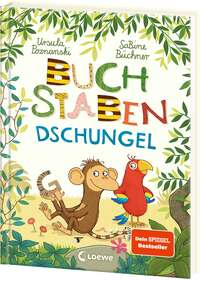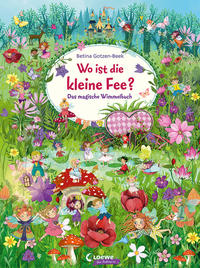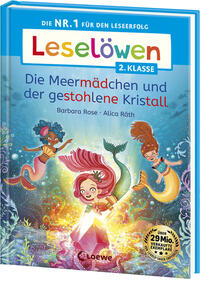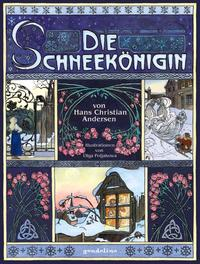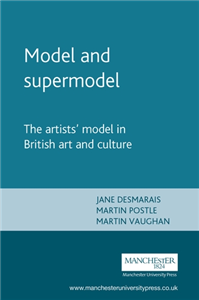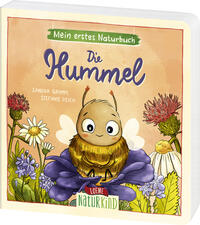Your Search Results
-
ZNN Network Literary and Illustrator Agency
- International Copyright, Licensing, and Literary Agency - International Illustrator Agency and Management Services - Creative Content Development Services
View Rights Portal
-
Promoted Content
-
Promoted Content2022
Talking to Customersin Pharmacies
A conversation guidefor newcomers and old hands
by Dr Kirsten Lennecke, Illustrated by Barbara Kohm
The basis for successful advice is having a sound knowledge of the effect and application of medicines, but also an instinct for the individual needs and characteristics of the person asking for your help. This skill can be trained! Entertaining explanations and numerous case examples taken from everyday pharmacy practice help with this. They show how pharmacy staff can react empathetically, avoid misunderstandings, and manage delicate situations with confidence. The 5th edition has become more colourful! This applies not only to the illustrations, but also to the team and customers of our model pharmacy. A personality model with distinctive colours representing the different characters promises exciting insights. Good communication creates satisfied customers who want to come back again and again!
-
September 1904
Hamlet
by William Shakespeare
Hamlet is Shakespeare's longest play, and is considered among the most powerful and influential works of world literature, with a story capable of "seemingly endless retelling and adaptation by others". The play likely was one of Shakespeare's most popular works during his lifetime, and still ranks among his most performed, topping the performance list of the Royal Shakespeare Company and its predecessors in Stratford-upon-Avon since 1879. It has inspired many other writers—from Johann Wolfgang von Goethe and Charles Dickens to James Joyce and Iris Murdoch—and has been described as "the world's most filmed story after Cinderella"
-
 Trusted Partner
June 2018
Trusted Partner
June 2018Die allerbeste Prinzessin
by Poznanski, Ursula / Illustrated by Büchner, SaBine
An innovative & different princess story! • The three princesses love to quarrel • Original and incredibly witty • Written by Ursula Poznanski and stunning illustrations by Sabine Büchner • Translation Grant! Bianca, Violetta and Rosalind are three adorable princesses. But they share a tiny quirk: they love to argue! One day a visitor asks for entrance into the castle. Prince Waldomir doesn’t enjoy hunting dragons anymore and rather prefers to get married know. Of course each princess is convinced to be the best choice and the prince’s one and only. So a rat race is launched before they have even met the puny prince for the first time…
-
 Trusted Partner
Trusted Partner
-
 Trusted Partner
1988
Trusted Partner
1988§ 218: Zu Lasten der Frauen
Neue Auskünfte zu einem alten Kampf
by Herausgegeben von Paczensky, Susanne von
-
 Trusted Partner
May 1982
Trusted Partner
May 1982Tübinger Vorlesungen Band 2. Die Anfänge der Geschichtsschreibung bei den Griechen
Herodot. Thukydides
by Wolfgang Schadewaldt, Ingeborg Schudoma, Ingeborg Schudoma, Maria Schadewaldt
Die griechische Geschichtsschreibung ist neben Dichtung und Philosophie ein dritter großer Themenkreis, der Wolfgang Schadewaldt sein ganzes Leben hindurch beschäftigt hat. Der zweite Band seiner Tübinger Vorlesungen enthält die beiden Vorlesungen: »Herodot. Die Anfänge der Geschichtsschreibung bei den Griechen« (1959) und »Thukydides« (1961/62). Die Tübinger Vorlesungen Wolfgang Schadewaldts liegen in vier Bänden vor: Band 1: Die Anfänge der Philosophie bei den Griechen (stw 218) Band 2: Die Anfänge der Geschichtsschreibung bei den Griechen (stw 389) Band 3: Die frühgriechische Lyrik (stw 783) Band 4: Sophokles. Euripides (stw 948)
-
 Trusted Partner
Literature & Literary StudiesMay 2023
Trusted Partner
Literature & Literary StudiesMay 2023Pasts at play
Childhood encounters with history in British culture, 1750–1914
by Rachel Bryant Davies, Barbara Gribling
This collection brings together scholars from disciplines including Children's Literature, Classics, and History to develop fresh approaches to children's culture and the uses of the past. It charts the significance of historical episodes and characters during the long nineteenth-century (1750-1914), a critical period in children's culture. Boys and girls across social classes often experienced different pasts simultaneously, for purposes of amusement and instruction. The book highlights an active and shifting market in history for children, and reveals how children were actively involved in consuming and repackaging the past: from playing with historically themed toys and games to performing in plays and pageants. Each chapter reconstructs encounters across different media, uncovering the cultural work done by particular pasts and exposing the key role of playfulness in the British historical imagination.
-
 Trusted Partner
Humanities & Social SciencesOctober 2020
Trusted Partner
Humanities & Social SciencesOctober 2020Representative democracy?
by Ron Johnston, Charles Pattie, David Rossiter
-
 Trusted Partner
Children's & YAMarch 2022
Trusted Partner
Children's & YAMarch 2022Ruby Fairygale und die Insel der Magie (Erstlese-Reihe, Band 1)
Fantasy-Abenteuer mit Ruby Fairygale ab 7 Jahren
by Marlene Jablonski, Kira Gembri / illustrated by Verena Körting
Ruby Fairygale and the Island of Magic Ruby Fairygale's first adventure - lovingly and excitingly told, with many atmospheric illustrations• Feel-good fantasy for Story Time, Early Readers and Fans of "Ruby Fairygale"!• Written by Marlene Jablonski (“Liliane Susewind” Chapter book series), based on a synopsis by Kira Gembri• Strong female protagonist and lovingly developed characters, with a high sympathy factor8-year-old Ruby Fairygale lives on a small island near the west coast of Ireland. After school, she always helps her grandmother, who works as a veterinarian. But the two of them have a big secret: they know that there are not only animals on the island, but also magical mythical creatures that need their help.Summer vacation at last! Now Ruby can spend the whole day helping her grandma. The two of them not only take care of animals, but also fairies, goblins and other mythical creatures! It's not easy to keep this secret - especially from Briana, the most unfriendly girl in Ruby's class. When Bri's father's fishing nets are destroyed, Briana suspects a pack of seals and is determined to drive them away. But Ruby suspects that something else is behind this. Something completely magical ... And indeed: a little mermaid had become entangled in the fishing net! Can Ruby still stop Bri without revealing her secret?
-
 Trusted Partner
November 2010
Trusted Partner
November 2010Die Pariser Weltausstellung 1889
Bilder von der Globalisierung
by Beat Wyss
Die gelungenste Weltausstellung aller Zeiten war die Exposition Universelle de Paris von 1889. Weit über 32 Millionen Menschen besuchten das gigantische Spektakel mit knapp 62.000 Ausstellern aus 54 Nationen und 17 französischen Kolonien. Das Wahrzeichen der Schau, der Eiffelturm, blieb Paris bis heute erhalten. Einen legendären Ruf erwarb sich auch das offizielle, wöchentlich erscheinende Journal der Weltausstellung. Auf großformatigen, mit Stahlstichen üppig illustrierten Seiten berichtete es von den Sensationen vor Ort, von dreirädrigen selbstfahrenden Karren und ethnologischen Dörfern, in denen es Kamelreiten für die Kinder und Bauchtänze für die Herren gab. Der Schweizer Kunsthistoriker Beat Wyss hat die hundert originellsten Abbildungen ausgewählt. Sie illustrieren, wie die Expo den Erdball auf ein »Weltdorf« zwischen Trocadéro und Champ de Mars schrumpfen lässt, wie räumliche Distanzen abgebaut und dabei kulturelle Differenzen freigelegt werden. Das späte 20. Jahrhundert wird dafür den Begriff der Globalisierung prägen. Beat Wyss zeigt, wie die Gesellschaften seit dem 19. Jahrhundert mit diesem Prozeß umgehen und mit der Verwestlichung der Welt eine Orientalisierung des Westens einhergeht. Dem Leser als Flaneur über die Bühne der Weltausstellung wird klar: Die Expo 1889 belegt nicht nur den aktuellen Zustand einer Zeit, sondern bietet über die spektakuläre Anordnung ihrer Exponate den Vorschein einer gesellschaftlichen Utopie.
-
 Trusted Partner
Children's & YAJuly 2019
Trusted Partner
Children's & YAJuly 2019Buchstabendschungel
by Poznanski, Ursula / Illustrated by Büchner, SaBine
Help the animals to find their letters ... easy as ABC!• By best-selling author Ursula Poznanski• Get a first feeling for letters and words!• Humorously illustrated, with funny details!After a big storm in the jungle, the little monkey collects many funny-looking things. “That are letters,” knows the smart parrot. “Somebody must have lost them”. And indeed, monkey and parrot come across strange animals that seem like something is missing. A "iger", a "nake", a "at" … An exciting letter story for reading aloud and early reading, guessing and poetizing by yourself!
-
 Trusted Partner
Literature & Literary StudiesSeptember 2020
Trusted Partner
Literature & Literary StudiesSeptember 2020Pasts at play
by Rachel Bryant Davies, Barbara Gribling, Anna Barton
-
 Trusted Partner
September 2022
Trusted Partner
September 2022Auftritt: Die Neue Frau
by Brigitte Landes
Ihr Auftreten in der jungen Millionenstadt Berlin mit Smoking, Zigarette, Bubikopf und Auto, als Flapper, Garçonne oder Girl, macht sie zur Ikone der Zwanziger Jahre. Sie spielt selbstbewusst, sachlich, frivol, provozierend und kämpferisch ihre neu errungene Rolle. In Essays, Reportagen und Kolumnen, in Erzählungen, Romanen und in Lebenserinnerungen wirbt und kämpft sie für die Idee von der ›Neuen Frau‹. Für Helen Hessel ist die »Mode eine Waffe im Kampf der Geschlechter«, Fritzi Massary, die »Frau, die weiß, was sie will«, schreibt vom »Glück des Autofahrens«, Marieluise Fleißer denkt nach über »Sportgeist und Zeitkunst«, Vicky Baum boxt und hat keine »Angst vor Kitsch«, Mascha Kaléko erzählt von den »Mädchen an der Schreibmaschine«, Pola Negri will den Männern missfallen, Gabriele Tergit und Else Lasker-Schüler protestieren gegen den §218, Blandine Ebinger und Claire Waldoff erkunden die Nachtseite Berlins, Josefine Baker tut, was ihr passt, und Valeska Gert platzt wie eine Bombe auf die Wilde Bühne, die Trude Hesterberg gegründet hat ... In den aus den unterschiedlichsten Quellen zusammengestellten Texten zeigt sich die neu gewonnene Freiheit mit ihren Licht- und Schattenseiten.
-
 Trusted Partner
February 2022
Trusted Partner
February 2022Wo ist die kleine Fee?
Das magische Wimmelbuch
by Wimmelbilderbücher / illustrated by Betina Gotzen-Beek
-
 Trusted Partner
Trusted Partner
-
 Trusted Partner
Trusted Partner
-
 Trusted Partner
History of Art / Art & Design StylesDecember 2006
Trusted Partner
History of Art / Art & Design StylesDecember 2006Model and supermodel
The artists' model in British art and culture
by Edited by Jane Desmarais, Martin Postle and Martin Vaughan
Over the last twenty years there have been flurries of interest in the artist's model, and recent exhibitions have stimulated new activity in this area. Model and Supermodel extends the discussion about the social and cultural significance of the model in British art and culture. A fascinating collection of essays and interviews, it examines the persistent mythology of the artist's model and some of the ambiguities involved in depicting the body. The volume begins with Martin Postle's survey of the profession of the model during the period c.1840-1940. Elizabeth Prettejohn considers the Pre-Raphaelite model and Alison Smith examines the lives of some nineteenth-century models who achieved fame and notoriety in their own right. Jane Desmarais looks at the model from a literary perspective and Reena Suleman presents the work of Edward Linley Sambourne. Michael Hatt's essay examines the aesthetic and ethical aspects of Tuke's use of boy models for his paintings of nude bathers, and William Vaughan reflects on the British figurative tradition from Sickert to Freud. Catherine Wood brings the volume up to date with her essay on the found model in contemporary art, and the volume concludes with two interviews with the artist, Peter Blake, and a life model, Susannah Gregory. The book offers a series of lively takes on the phenomenon of the artist's model. It will make fascinating reading for those interested in modern art and the wider aspects of British culture and society.
-
The ArtsMarch 1905
Concerning the Spiritual in Art
by Wassily Kandinsky
A pioneering work in the movement to free art from its traditional bonds to material reality, this book is one of the most important documents in the history of modern art. Written by the famous nonobjective painter Wassily Kandinsky (1866–1944), it explains Kandinsky's own theory of painting and crystallizes the ideas that were influencing many other modern artists of the period. Along with his own groundbreaking paintings, this book had a tremendous impact on the development of modern art. Kandinsky's ideas are presented in two parts. The first part, called "About General Aesthetic," issues a call for a spiritual revolution in painting that will let artists express their own inner lives in abstract, non-material terms. Just as musicians do not depend upon the material world for their music, so artists should not have to depend upon the material world for their art. In the second part, "About Painting," Kandinsky discusses the psychology of colors, the language of form and color, and the responsibilities of the artist. An Introduction by the translator, Michael T. H. Sadler, offers additional explanation of Kandinsky's art and theories, while a new Preface by Richard Stratton discusses Kandinsky's career as a whole and the impact of the book. Making the book even more valuable are nine woodcuts by Kandinsky himself that appear at the chapter headings. This English translation of Über das Geistige in der Kunst was a significant contribution to the understanding of nonobjectivism in art. It continues to be a stimulating and necessary reading experience for every artist, art student, and art patron concerned with the direction of 20th-century painting.
-
 Trusted Partner
Trusted Partner




















